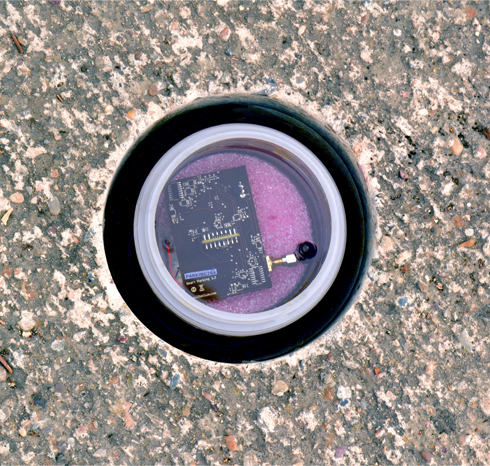When we talk about the Internet of Things (IoT) many times we run the risk of thinking more about the future than the present, and nothing could be further from the truth. Today there are many startups working with public administrations and businesses in the implementation of solutions related to the connection of machines to the Internet, the collection and analysis of data, and resource management. It is, without doubt, the most important step towards the paradigm of real smart cities.
By 2020 there will in the world 30 billion devices connected thanks to the Internet of Things phenomenon, according to Gartner. To put this technological boom in perspective, in 2009 there were approximately 2.5 billions, mainly phones, tablets and PCs. In the next five years, it is expected that the volume of business for the Internet of Things solution providers will be around 19 billion dollars.
1. Control of air pollution and improvement of public transport
One of the main problems of European and Asian cities are their high levels of air pollution, largely caused by road traffic. Currently there are solutions related to the IoT that can help public administrations ensure a sustainable management of traffic by placing sensors which measure pollution and the use of predictive models.
A practical example is the RESCATAME Project, led by Libelium, one of the leading Spanish providers in IoT solutions. The program, launched by the City Council of Salamanca, has allowed to obtain a large amount of traffic data by placing sensors on a Waspmote base, which provide information about temperature, relative humidity, carbon monoxide (CO), nitrogen dioxide (N02), ozone (O3), and levels of particles in the air.
Another similar example can be found in Helsinki, where the urban bus service has a system known as HELB (Helsingin Bussiliikenne Oy) which allows to collect data through sensors placed on the vehicles. Thanks to the analysis of this information city authorities have managed to reduce fuel consumption, improve routes and also the skills of bus drivers.
2. Forest fires alerts
The company NTForest, headquartered in the Technology Park of Paterna (Valencia), has been developing for some time IoT solutions for the protection and preservation of the environment, and especially for fighting against forest fires.
The Spanish company has sensors able to collect real-time data on humidity, relative temperature, combustion gases and other environmental factors that indicate how a fire is evolving and how it should be extinguished. The project, known as Senticnel, uses WSN (Wireless Sensor Network) technology for the early detection of forest fires.
The sensors, distributed through the woods, collect data and have the ability to connect with each other through a wireless network. When a fire starts, some of these sensors activate an alarm and send it to a receiver, which issues an SMS warning. In this way, forest protection services can quickly activate a fire protocol.
3. Development of a smart agriculture
The use of the IoT for the collection and analysis of data has allowed what is known as smart agriculture. There is currently a project led by the company iSoftStone, based in China, which is installing sensors with cameras in farms in the northern province of Hebei. These devices collect data on temperature, humidity and precipitation over crops.
These solutions help farmers manage their crops more efficiently and improve as well the quality control and safety services. Each product has its history clearly identified and stored in the cloud, which can be recovered if there are failures in the food control process.
4. Management of public car parks
The inefficient management of car parking spaces contributes to the increase of pollution in big cities. Finding a parking spot causes more road congestion, a waste of fuel and a waste of time. The SMART SANTANDER project, implemented by the public administration, the University of Cantabria, Telefónica and Libelium, has distributed nearly 1,200 Waspmote sensors throughout the Spanish city, of which 375 are focused on collecting information about the number of free parking spaces available.
The project divides the city of Santander in 22 different areas, and in each one there is a sensor connected to the cloud called Meshlium. Each sensor operates in a different frequency in order to not alter or cross data. Each Waspmote detects whether a free parking space is available thanks to another magnetic field sensor. Other cities like Barcelona have already managed to save 50 million euros a year applying IoT solutions.
5. Saving in the lighting of big cities
The project sponsored by Philips and Ericsson to illuminate big cities with LED technology and also provide mobile broadband connectivity through public street lighting is well known. The solution, known as Zero Site, has several objectives: reduce costs between 50% and 70% and improve connectivity to the Internet safely and more efficiently. This project was one of the sensations at the last Mobile World Congress in Barcelona.
6. Practical applications in the retail world
One of the sectors where the Internet of Things is a real revolution is retail. The use of sensors or RFID (Radio Frequency Identification) is already allowing the collection and analysis of real time data regarding the location and actions of vendors, clients, products and inventory. Ultimately, this information allows to create solutions which connect perfectly with consumers: they can be informed through their mobile devices about store inventory, offers, discounts and reviews of products, personalized customer services, etc.
Many companies are applying the beacons technology to the shopping experience. TAPTAP Networks, Estimote, Seeketing and Tiendeo are four examples. There are other practical cases of IoT applied in the retail world: anti-theft devices (Electronic Article Surveillance – EAS) to reduce fraud by customers or staff, and electronic shelf labels (ESL), which allow to establish prices dynamically and even link them to offers and promotions (this is already being used by Carrefour).
7. Management of garbage collection
Important cities in India have been experimenting for some time with the Internet of Things applied to garbage management. Mumbai, Bangalore and Delhi are highly populated cities and all of them aim to have cleaner environments.
To give just two examples, Mumbai awarded a contract to the company Steria India Limited for the implementation of a Vehicle Tracking System (VTS) using RFID technology: thanks to this protocol trucks, garbage bins and collection centers are connected. The city of Ahmedabad has launched a similar project to automate the collection of garbage.
The Internet of Things will reinvent the business models and processes of most industrial sectors. Companies that have conducted a successful digital transformation are even opening new business in areas they did not explore when they were first launched. Nike and Samsung, for example, wanted to sell sports clothing and consumer electronics… and now they make health-related wearables. And Google started as an Internet search engine and today it manufactures connected and autonomous cars. The IoT is a moving train, and you have to get on it.












